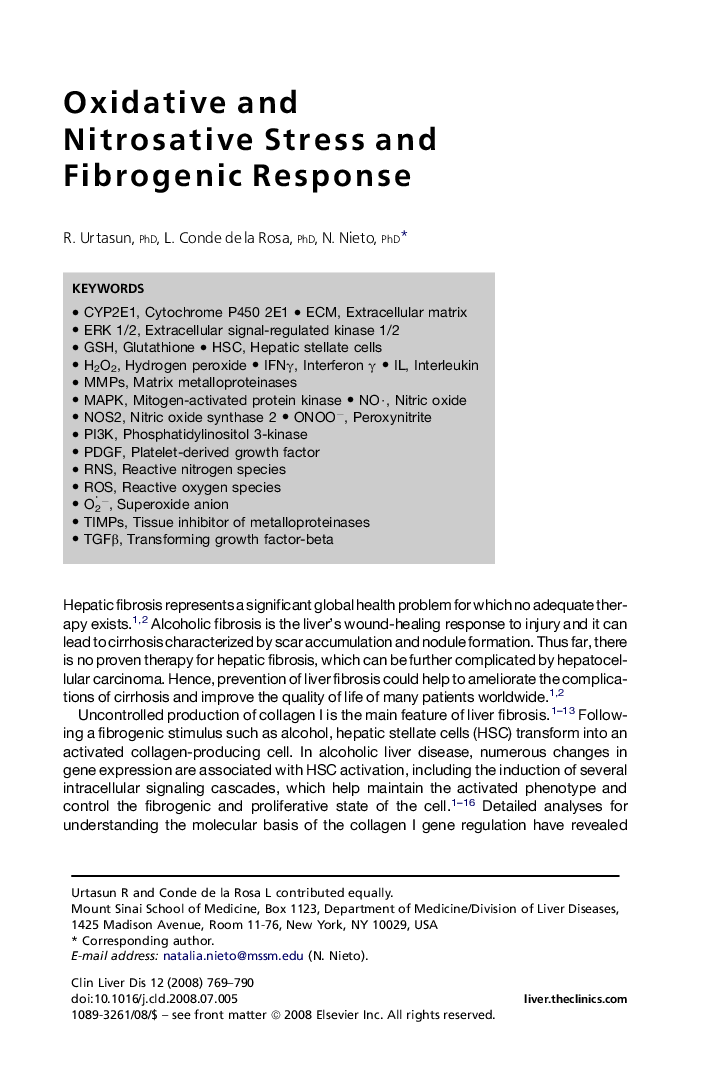| Article ID | Journal | Published Year | Pages | File Type |
|---|---|---|---|---|
| 3461640 | Clinics in Liver Disease | 2008 | 22 Pages |
Abstract
Uncontrolled production of collagen I is the main feature of liver fibrosis. Following a fibrogenic stimulus such as alcohol, hepatic stellate cells (HSC) transform into an activated collagen-producing cell. In alcoholic liver disease, numerous changes in gene expression are associated with HSC activation, including the induction of several intracellular signaling cascades, which help maintain the activated phenotype and control the fibrogenic and proliferative state of the cell. Detailed analyses for understanding the molecular basis of the collagen I gene regulation have revealed a complex process involving reactive oxygen species (ROS) as key mediators. Less is known, however, about the contribution of reactive nitrogen species (RNS). In addition, a series of cytokines, growth factors, and chemokines, which activate extracellular matrix (ECM)-producing cells through paracrine and autocrine loops, contribute to the fibrogenic response.
Keywords
ERK 1/2, extracellular signal-regulated kinase 1/2NOS2, nitric oxide synthase 2CYP2E1, Cytochrome P450 2E1H2O2, hydrogen peroxideHSC, hepatic stellate cellsIFNγ, Interferon γMMPs, matrix metalloproteinasesONOO−, PeroxynitritePDGF, platelet-derived growth factorRNS, reactive nitrogen speciesROS, Reactive Oxygen SpeciesIL, interleukinPI3K, phosphatidylinositol 3-kinaseECM, extracellular matrixMAPK, mitogen-activated protein kinaseGSH, glutathione
Related Topics
Health Sciences
Medicine and Dentistry
Medicine and Dentistry (General)
Authors
R. PhD, L. Conde PhD, N. PhD,
